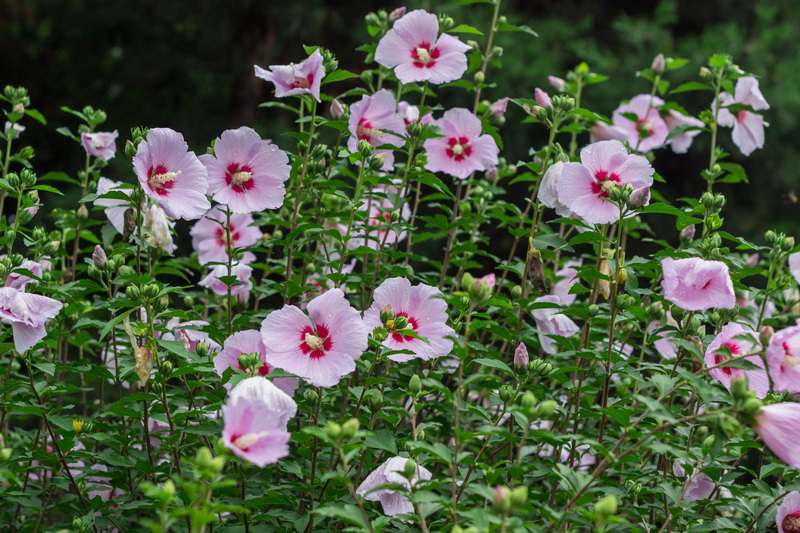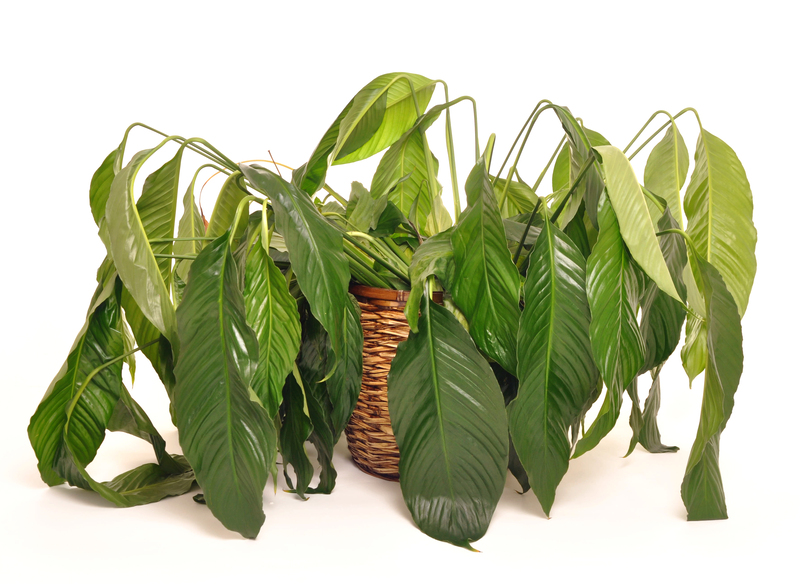Essential Tips for Nurturing Orchids: The Ultimate Guide for Healthy Orchids
If you've ever been captivated by the delicate beauty and exotic charm of orchids, you're not alone. These mesmerizing blooms are among the most sought-after houseplants worldwide. However, nurturing orchids can seem daunting for many gardeners, both beginners and seasoned enthusiasts alike. In this comprehensive guide, we'll reveal the essential tips for nurturing orchids, ensuring your plants not only survive but truly thrive.

What Makes Orchids Unique?
Orchids belong to one of the largest plant families, Orchidaceae, boasting more than 25,000 species and over 100,000 hybrids. Their remarkable diversity is a testament to their adaptability, but it also means that orchid care tips can vary. That said, several fundamental principles apply to most popular varieties grown indoors, such as Phalaenopsis (moth orchids), Dendrobium, and Cattleya.
Let's explore the key factors for orchid plant care and how you can create the ideal environment for these botanical wonders.
Choosing the Right Orchid
Popular Types of Orchids for Beginners
- Phalaenopsis (Moth Orchid): Renowned for their forgiving nature and spectacular blooms.
- Dendrobium: Diverse and relatively easy to care for, ideal for novice growers.
- Cattleya: Known for large, fragrant flowers and vibrant colors.
- Oncidium: Thrives indoors with proper light and humidity.
Before you purchase, consider your home's unique conditions--light, temperature, and humidity. This will help you select the right orchid variety that is more likely to flourish in your environment.
Setting Up the Optimal Growing Environment
Light: How Much Sunlight Do Orchids Need?
Orchids demand the right balance of light to bloom well. Insufficient light can prevent flowering, while too much can scorch their leaves. Place your orchid in an east- or west-facing window where it will receive bright, indirect sunlight. A south-facing window with a sheer curtain is another excellent option.
- Phalaenopsis: Prefers low to medium, filtered light.
- Dendrobium and Cattleya: Enjoy more intense but still indirect light.
- Look for leaf color: Healthy leaves are light green. Dark green suggests too little light, while yellowish leaves may signal overexposure.
Tip: If natural light is insufficient, consider using grow lights or fluorescent lamps. Keep lights about 6-12 inches above the plant for best results.
Temperature and Humidity: Creating a Tropical Haven
Orchids are native to tropical and subtropical climates, so mimicking these environmental conditions is vital. Most orchids thrive at daytime temperatures between 65-80?F (18-27?C) and nighttime temperatures around 10?F cooler. Consistent temperature fluctuations help trigger flowering cycles.
- Maintain humidity levels between 40% and 60% for optimal orchid health.
- Boost humidity using a humidity tray or a small humidifier, especially during winter or in dry climates.
- Mist orchid leaves in the morning, avoiding standing water on the foliage.
The Art of Watering: How to Water Orchids Effectively
Proper watering is paramount--overwatering is the top cause of orchid demise. Orchids prefer to dry out slightly between watering. Always use tepid, non-chlorinated water. A sink soak is often best: immerse the pot (not the plant!) for about 10 minutes, then let it drain completely.
- Watering Frequency: Typically, once a week is sufficient for most houseplant orchids. In warmer months or drier homes, they may need water more often.
- Check the potting mix: If it feels dry to the touch an inch down, it's time to water.
- Avoid letting water sit at the bottom of the pot or the crown of the plant to prevent root rot and disease.
Tip: Always water in the morning to give the leaves time to dry by nighttime.
Potting Mix and Repotting Your Orchid
Best Potting Mix for Orchids
Unlike traditional houseplants, orchids generally don't grow in ordinary soil. They need a special orchid potting mix that allows their unique roots to breathe. Typical mixes include:
- Bark chips: Cedar or fir bark promotes aeration.
- Sphagnum moss: Helps retain moisture.
- Perlite/charcoal: Boosts drainage and prevents decomposition.
- Coconut husk chips: An eco-friendly addition for good airflow.
Repot your orchid every 1-2 years or when you notice the potting mix breaking down. Signs it's time to repot include roots growing out of the pot, slow growth, or persistent leaf/yellowing issues.
How to Repot an Orchid: Step-by-Step
- Carefully remove the plant from its current container. Gently shake loose any old mix from the roots.
- Trim away any brown, shriveled, or mushy roots with sterilized scissors.
- Fill a new pot (with drainage holes) one-third full with fresh orchid mix.
- Position your orchid so the new growth is centered and add more mix, gently firming around the roots.
- Water lightly and keep the orchid out of direct sunlight for a week until it settles.
Nourishing Your Orchids: Fertilizing Best Practices
To nurture healthy orchid blooms and lush leaves, your plant needs regular feeding--but not too much. Use a balanced, water-soluble orchid fertilizer (such as 20-20-20 or one specially labeled for orchids). Dilute the fertilizer to half-strength and apply it monthly, or "weekly, weakly" for a more continuous approach (quarter strength every week).
- Always water your orchid before fertilizing; never apply to dry roots.
- Avoid using standard houseplant foods, as they may contain excess salts.
- Stop fertilizing during your orchid's dormant phase (usually after blooming, in late fall or winter).
Fact: Some orchids (like Dendrobium) benefit from slightly more fertilizer during active growing seasons--check your specific species' needs for details!
Encouraging Orchid Blooms
Getting your orchids to rebloom is one of the most rewarding accomplishments for any grower. If your plant isn't flowering, review its care: insufficient light, improper watering, or temperature issues are common culprits. Here's how you can encourage thriving blooms:
- Provide cooler nighttime temperatures (about 10?F cooler than daytime).
- Ensure adequate bright, indirect sunlight--watch for healthy green leaves.
- Maintain regular watering and fertilizing schedules, but avoid overfeeding.
- Be patient: Some species bloom only once annually, while others can flower multiple times a year with correct care.
After flowering, remove spent spikes with sterile scissors unless your orchid is a Phalaenopsis, which can sometimes rebloom from an old spike.
Common Orchid Problems and Solutions
Addressing Yellowing Leaves and Root Rot
Most issues with orchid care stem from improper watering or lighting. Here's how to troubleshoot:
- Yellowing Leaves: Can indicate overwatering, insufficient light, or nutrient deficiencies.
- Root Rot: Almost always caused by excess moisture. Repot immediately, remove mushy roots, and use fresh mix.
Pests and Disease
- Mealybugs: Cottony spots on leaves. Treat with insecticidal soap or rubbing alcohol on a cotton swab.
- Scale insects: Brown, immobile bumps. Remove gently with a damp cloth and treat with horticultural oil.
- Fungal/Bacterial Spots: Black or brown spots. Increase circulation and keep leaves dry; remove affected foliage if necessary.
Always isolate new plants to avoid infestations spreading to your collection.
Pruning and Maintenance for Healthy Orchids
Regular orchid plant maintenance ensures vigorous growth and more frequent blooms. Remove old flower spikes (except with some Phalaenopsis), trim dead or yellowed leaves, and inspect roots at least once a year. Always use sterilized pruners to prevent the spread of disease.
Orchid Rest Periods
Certain types of orchids enter a dormant phase after blooming. During this rest period, reduce watering (but never let roots completely dry out) and stop fertilizing. This phase encourages healthy new growth and future blooms.
Creating the Perfect Display for Your Orchids
Presentation matters! Orchids make stunning decorative pieces. Use attractive containers with proper drainage, and group several orchids together for a lush, mini-jungle effect. Ensure containers and displays still allow for adequate airflow and proper light access.
- Mounting: Some orchids can be grown mounted on bark or wood for a natural look--great for species like Dendrobium or Vanda.
- Hanging baskets: Ideal for orchids that enjoy more humidity and air movement.

Expert Tips for Long-term Orchid Success
- Label your orchids with species and repotting dates to keep accurate track of their needs.
- Stay consistent: Orchids dislike drastic changes. Stick to a reliable care routine.
- Observe your plants: Happy orchids display steady growth, supple leaves, and vibrant blooms.
- Join local orchid societies: Learning from experienced enthusiasts can boost your knowledge and enjoyment.
Conclusion: Growing Healthy, Flourishing Orchids with Confidence
With the right knowledge and a dash of patience, nurturing orchids becomes a rewarding experience, not a mystery. Remember, while orchids have a reputation for being finicky, most thrive on a simple, steady care routine--balancing light, water, and humidity, with a little extra attention during blooming cycles.
Start with forgiving varieties like Phalaenopsis. Study your individual plants, and fine-tune your approach based on their unique responses. In time, you'll find that essential orchid care becomes second nature, and your home will be graced with resplendent, healthy blooms for years to come.
Ready to become an orchid expert? Bookmark this guide on orchid nurturing tips and share your own orchid-care journeys in the comments below!


